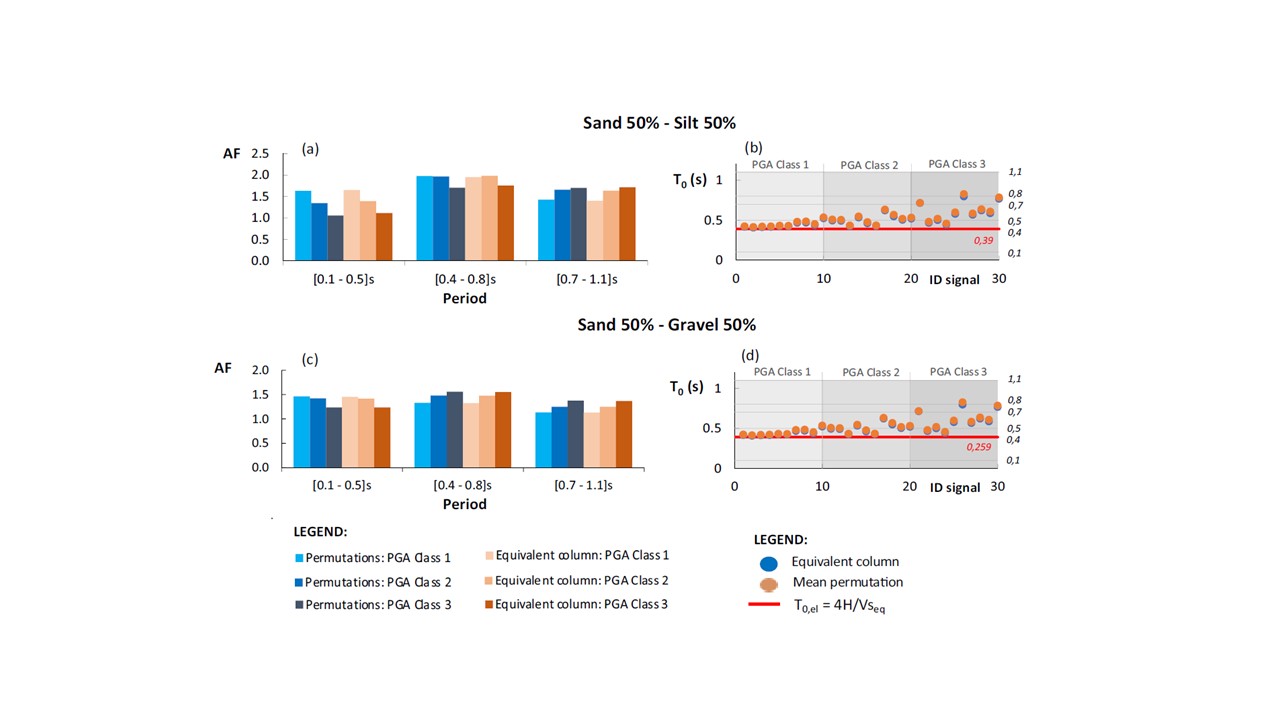
The possible use of equivalent homogeneous subsoil models for 1D seismic response analyses in seismic microzonation studies
- 25 Febbraio 2022
- Pericolosità, Pubblicazioni
Autori: Fabozzi S.1, Albarello D. 2, Pagliaroli A. 3, Moscatelli M. 1
Affiliazioni:
1 Institute of Environmental Geology and Geoengineering, National Research Council of Italy,
Rome, Italy
2 Department of Physics, Earth and Environmental Sciences, University of Siena, Siena, Italy, 3 Department of Engineering and Geology, University of Chieti Pescara G. D’Annunzio, Chieti, Italy
2022 Bulletin of Earthquake Engineering
Abstract
The possibility is here explored to use an ‘equivalent’ homogeneous configuration to simulate 1D seismic response of heterogeneous engineering-geological bodies when relatively weak seismic impedance contrasts internal to the bodies (it was assumed a shear wave velocity variation between the alternating layers equal to 150 m/s) only exist above the seismic bedrock. This equivalent configuration is obtained by considering an equivalent Vs value the harmonic average of the actual Vs values and a linear combination of G/G0 and D curves relative to the lithotechnical components present in the actual configuration. To evaluate feasibility of this approach, a wide set of numerical simulations was carried out by randomly generating subsoil layering including sequences of alternating thin layers of geotechnical units (e.g. sands and clays) each characterized by a characteristic nonlinear curve. Outcomes of these simulations are compared with those provided by considering a single homogeneous layer characterized by equivalent nonlinear curves obtained as a weighted average of the original curves. By comparing the heterogeneous and the homogeneous columns seismic response in terms of amplification factors and fundamental period, the results confirm the possibility to model a 1D column characterized by a generic lithostratigraphic succession with an equivalent one without introducing significative errors that, at least for the studied cases, do not exceed the 6%. This conclusion is substantially confirmed by extending the comparison to a real case, i.e., the 113 m-thick heterogeneous soil profile at Mirandola site (Northern Italy), presented in the last part.

CONTRATTO CONCERNENTE L’AFFIDAMENTO DI SERVIZI PER “PROGRAMMA PER IL SUPPORTO AL RAFFORZAMENTO DELLA GOVERNANCE IN MATERIA DI RIDUZIONE DEL RISCHIO SISMICO E VULCANICO AI FINI DI PROTEZIONE CIVILE NELL’AMBITO DEL PON GOVERNANCE E CAPACITÀ ISTITUZIONALE 2014-2020”– CIG 6980737E65 – CUP J59G16000160006
Copyright © 2017 - Progetto grafico e sviluppo Heap Design



